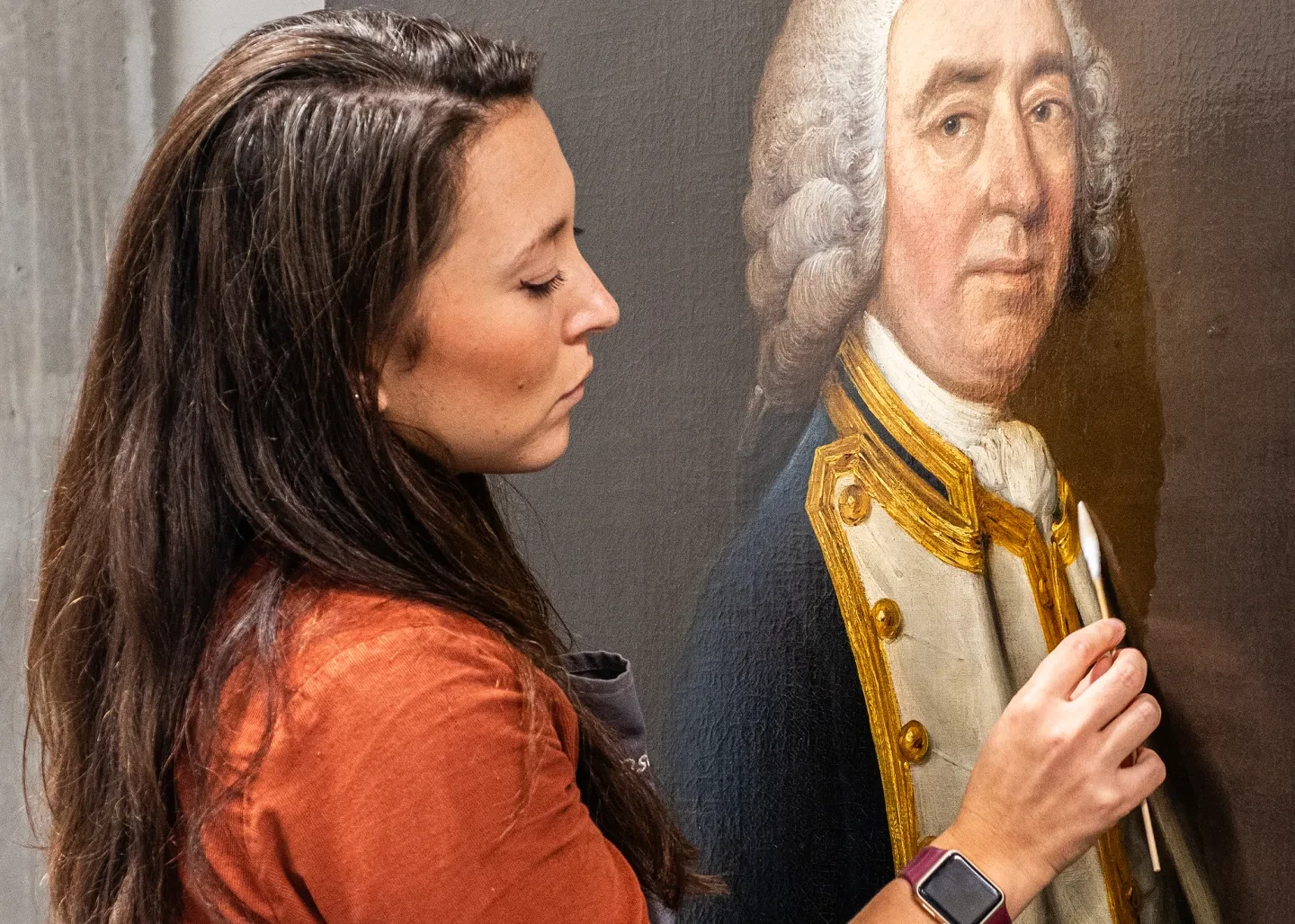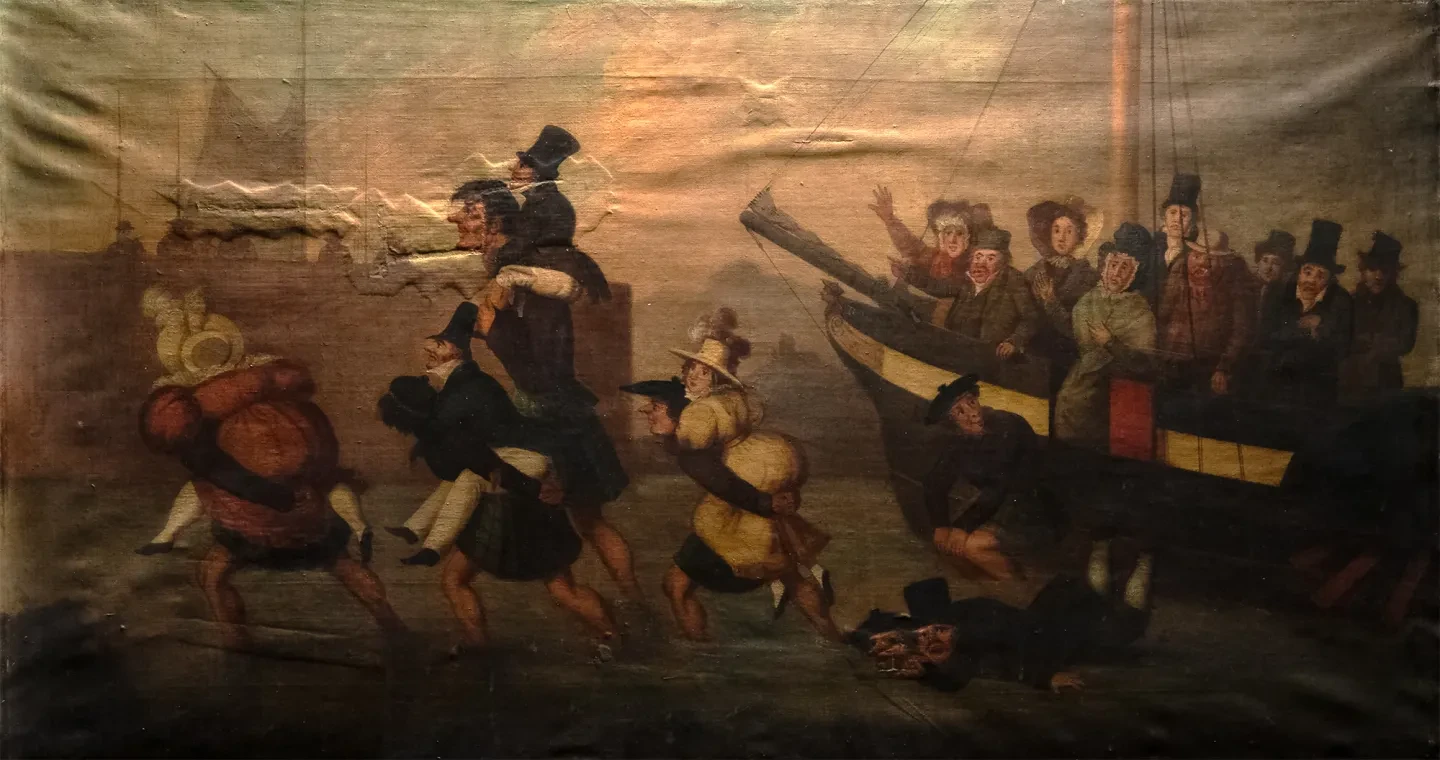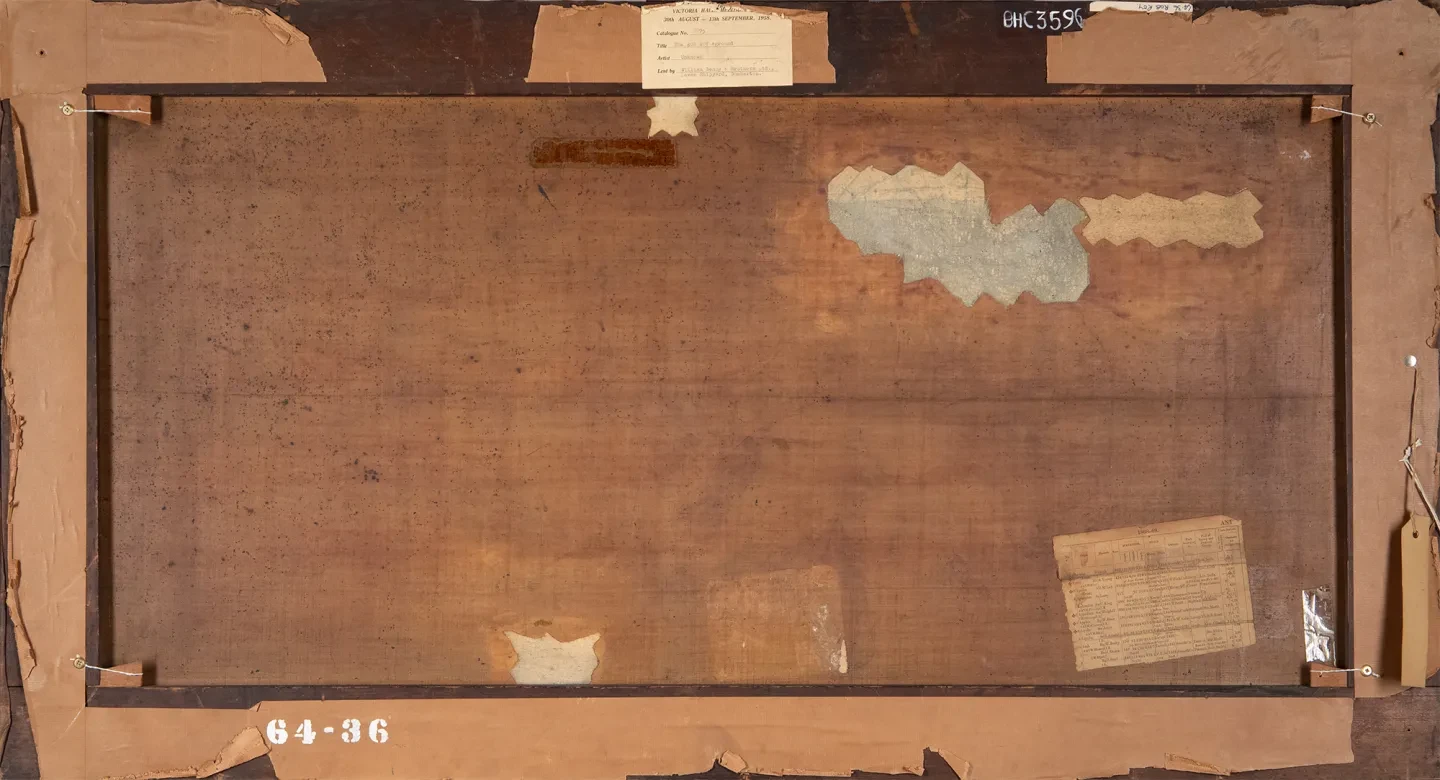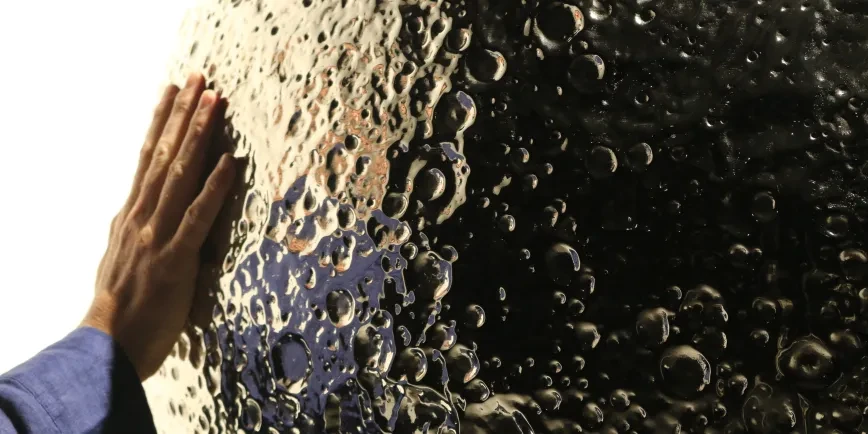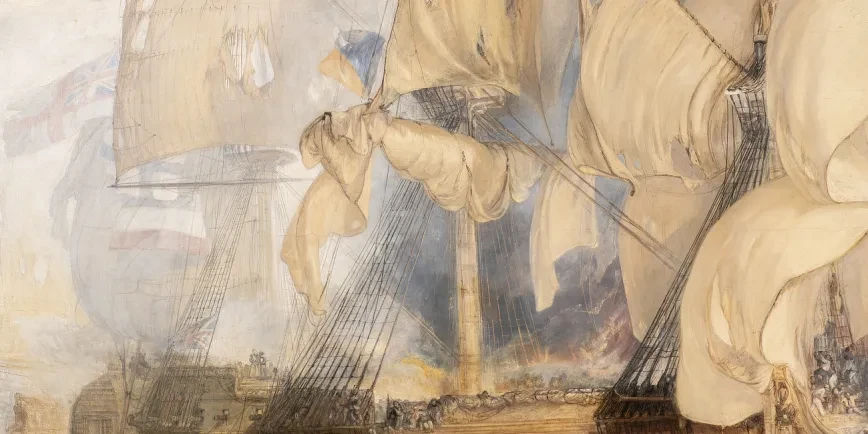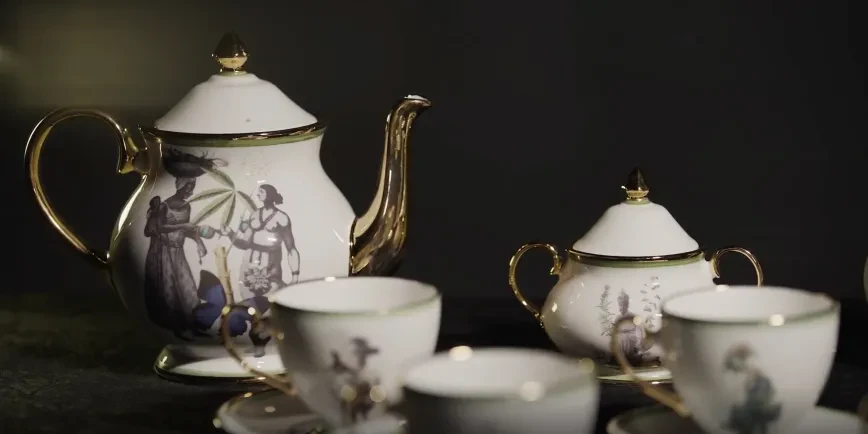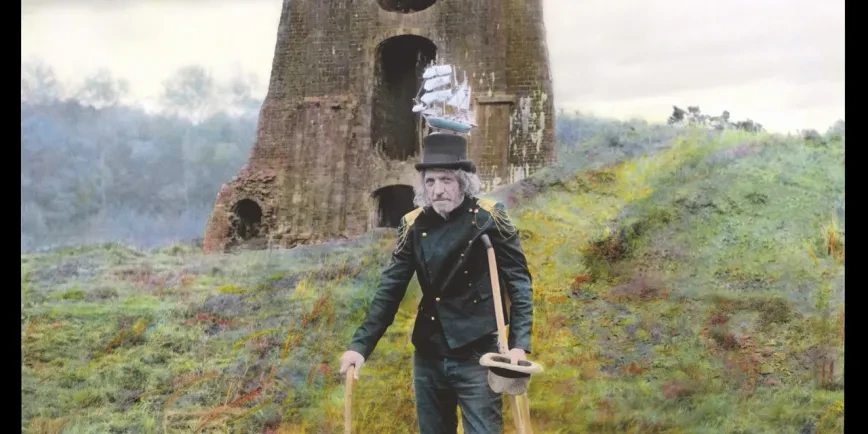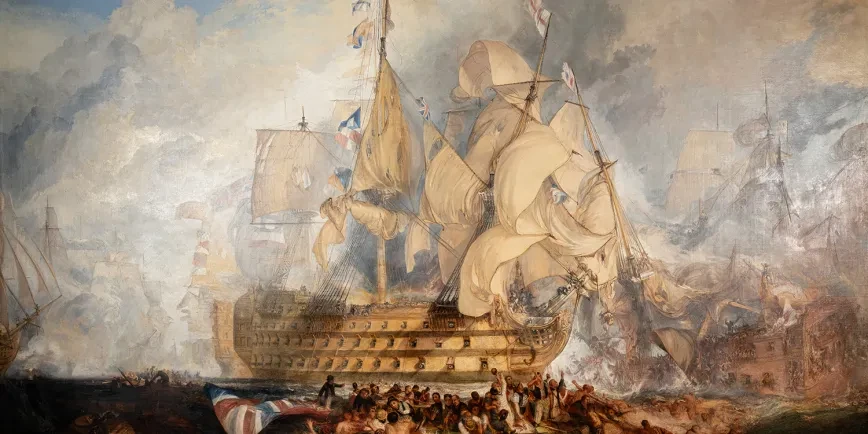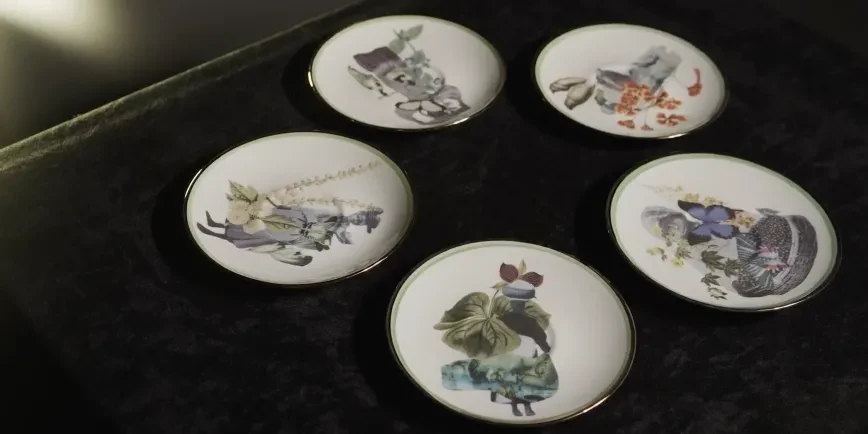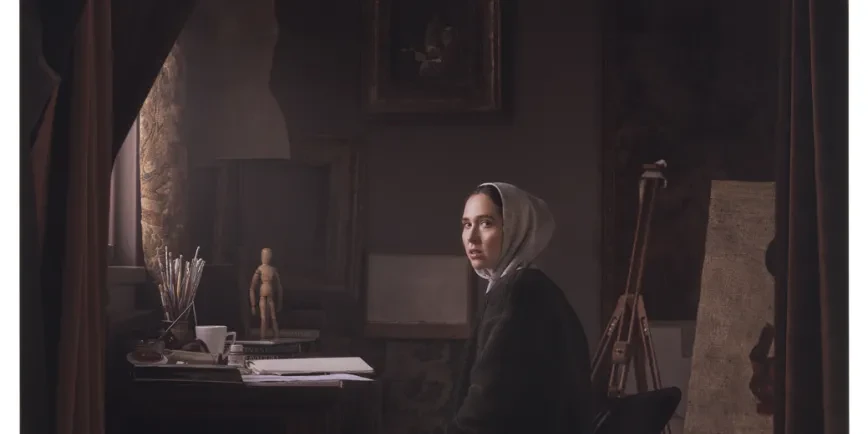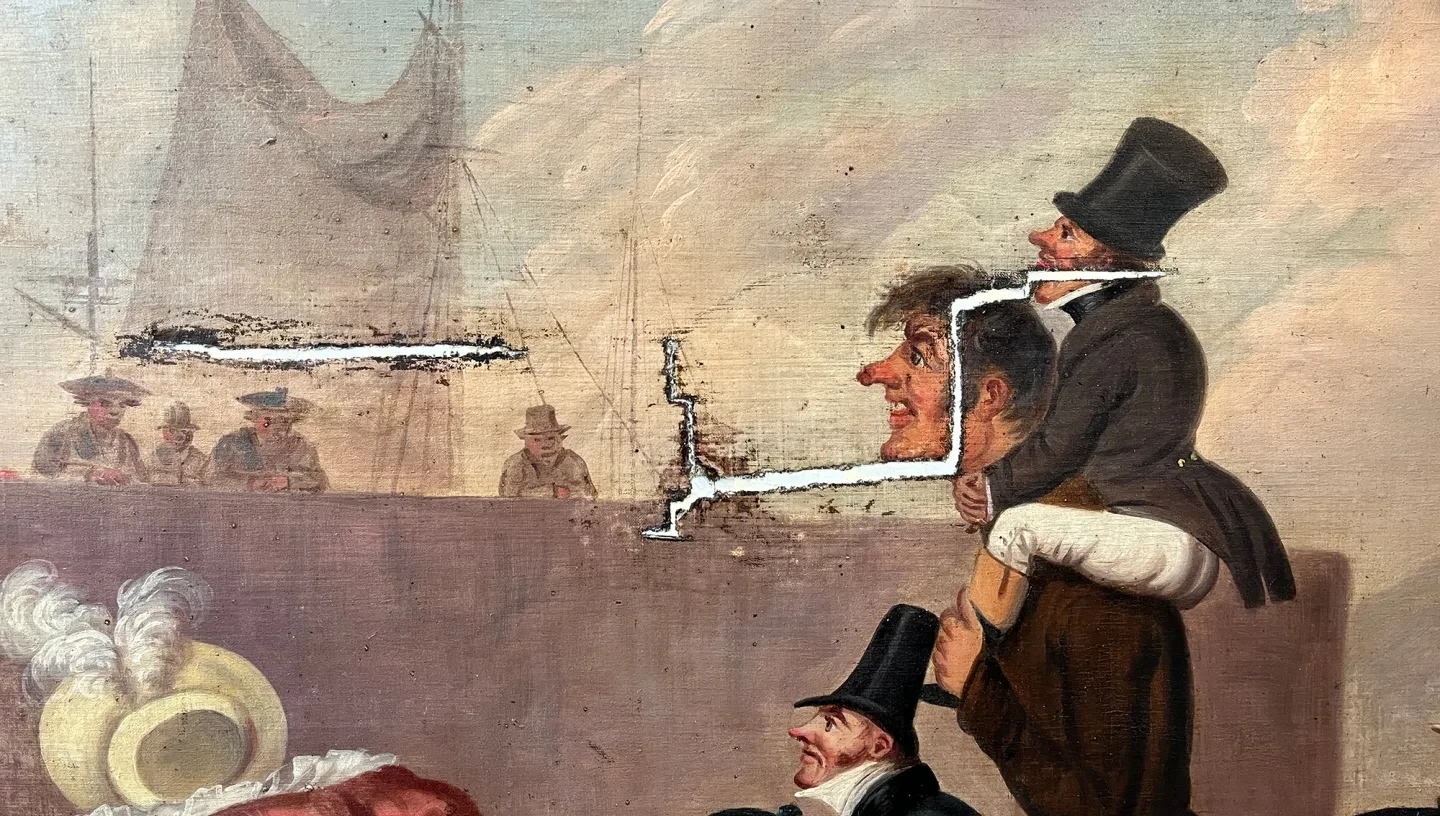
Learn more about this comic scene with a surprising back story – and discover how your support helps care for the national collection.
Why your support matters
Routinely, conservators like Miranda Brain, Paintings Conservation Manager at Royal Museums Greenwich, carry out detailed surveys of the vast paintings collection at the Prince Philip Maritime Collections Centre – currently numbering around 4,000 works.
Their mission? To catch small issues before they become big problems.
The Museum’s collection is condition-rated from grade A – meaning a work is ready for display – to E, signalling a most unstable and deteriorated state. Currently, 13.7 per cent of our paintings collection is rated C or below.
It was during one of these routine checks that Miranda spotted The Paddle Steamer ‘Rob Roy’ Aground. What began as a simple inspection became the start of a much-needed rescue effort.
Now, Miranda and the team need your help. Conservation work like this requires time and expertise. Your donations directly support this hands-on care, allowing artworks to be restored and brought back to life for future generations to enjoy.
Satire and steam
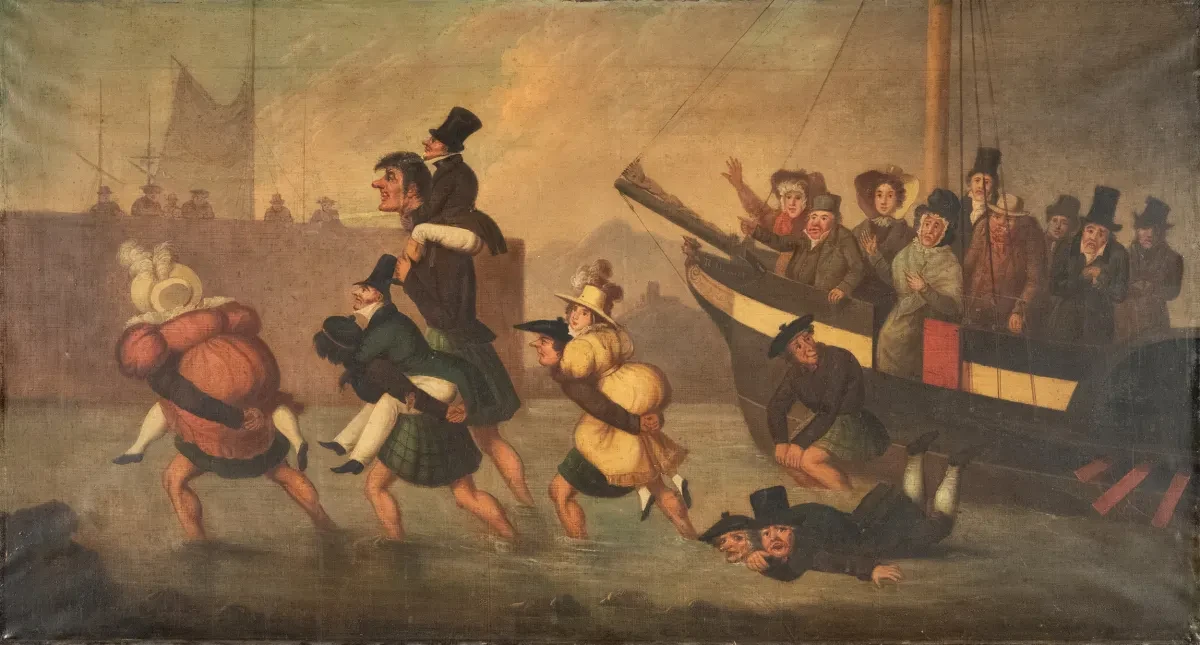
At first glance The Paddle Steamer ‘Rob Roy’ Aground depicts a farcical scene.
A chaotic landing unfolds on the Scottish coast: passengers clamber from a grounded vessel and are carried ashore by straining locals in kilts. One unfortunate rescuer collapses beneath a portly passenger, the two sprawled comically in the shallows. Exaggerated expressions and distorted proportions turn this scene into a caricature of maritime misadventure, but beneath the humour lies an important moment in history: the shift from sail power to steam.
The vessel depicted is the Rob Roy, named after the Scottish folk hero. Built by pioneering shipbuilder William Denny in 1818, the Rob Roy made history as the first steam-powered vessel to complete an open-sea voyage, sailing from Glasgow to Dublin. Until then, steamships had been confined to rivers. This successful crossing marked a pivotal moment in maritime engineering, ushering in a new era of travel and trade.
The ship went on to run regular routes between Scotland and Ireland, before being relocated to Dover and purchased by the French government, becoming France’s first seaworthy steamship by 1823.
The painting commemorates this ground-breaking ship, albeit through a humorous lens. It is not known if the scene depicted is real or imagined. During the Rob Roy’s maiden voyage it was forced to make a weather-related stop at Lamlash Bay on the Isle of Arran, but there is no evidence that it actually ran aground.
Among those on board for this historic trip were shipowner David Napier and his friend Charles Macintosh. Macintosh, later inventor of the waterproof coat, was convinced the trip would end in disaster. Some of the scared expressions shown in the painting evoke, in a comically exaggerated way, this sense of trepidation at trying out unproven technology.
Playful yet deeply rooted in a story of innovation and progress, this painting deserves to be preserved and understood. With your help, we can ensure it is.
Conserving a painting at risk
When Miranda examined the painting under raking light (light cast across the surface at an oblique angle), she discovered star-shaped patches distorting the delicate canvas.
Historic restoration attempts, prior to the National Maritime Museum acquiring the painting in 1964, had caused tension in the canvas and risk of further tears. Strong adhesives, shrinkage, heavy overpaint and even Sellotape had all taken their toll.
The varnish had also yellowed with age, flattening the painting’s vibrant tones and muting the artist’s original intent. Without intervention, the damage would worsen.
With surface cleaning and varnish removal complete, our conservation team is now delicately assessing whether the torn canvas can be rejoined. They are testing different techniques, balancing what is safe and what is effective, all to honour the artist’s vision.
But they can’t do it alone.
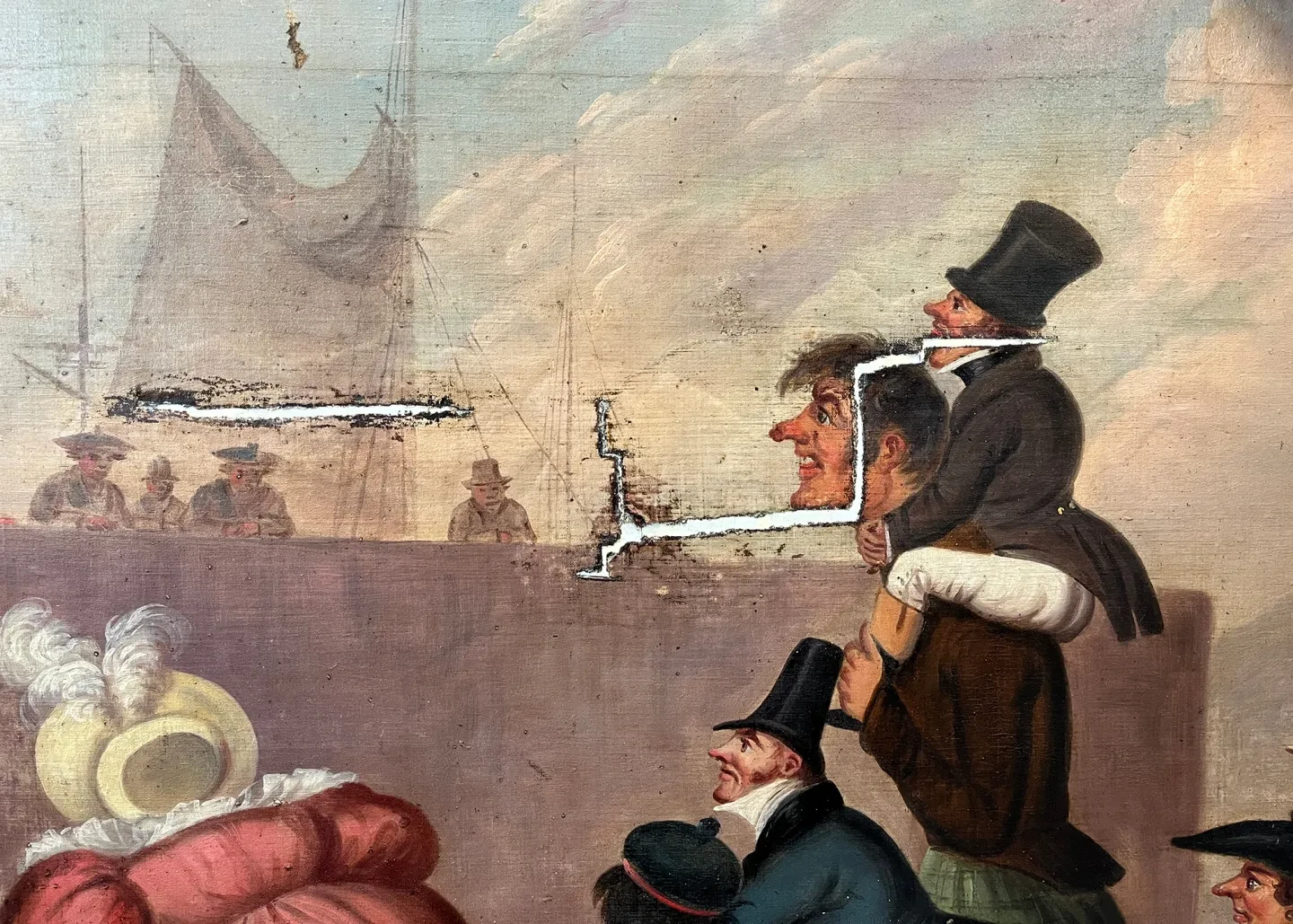
Help Miranda and the team finish the job
Restoring The Paddle Steamer ‘Rob Roy’ Aground is just one part of the Museum's wider mission to care for the country’s paintings collection and maritime heritage. Your support keeps this essential work going.
By donating today, you become part of this painting’s story and help ensure that historically significant, humorous and clever artworks like this are protected for generations to come.
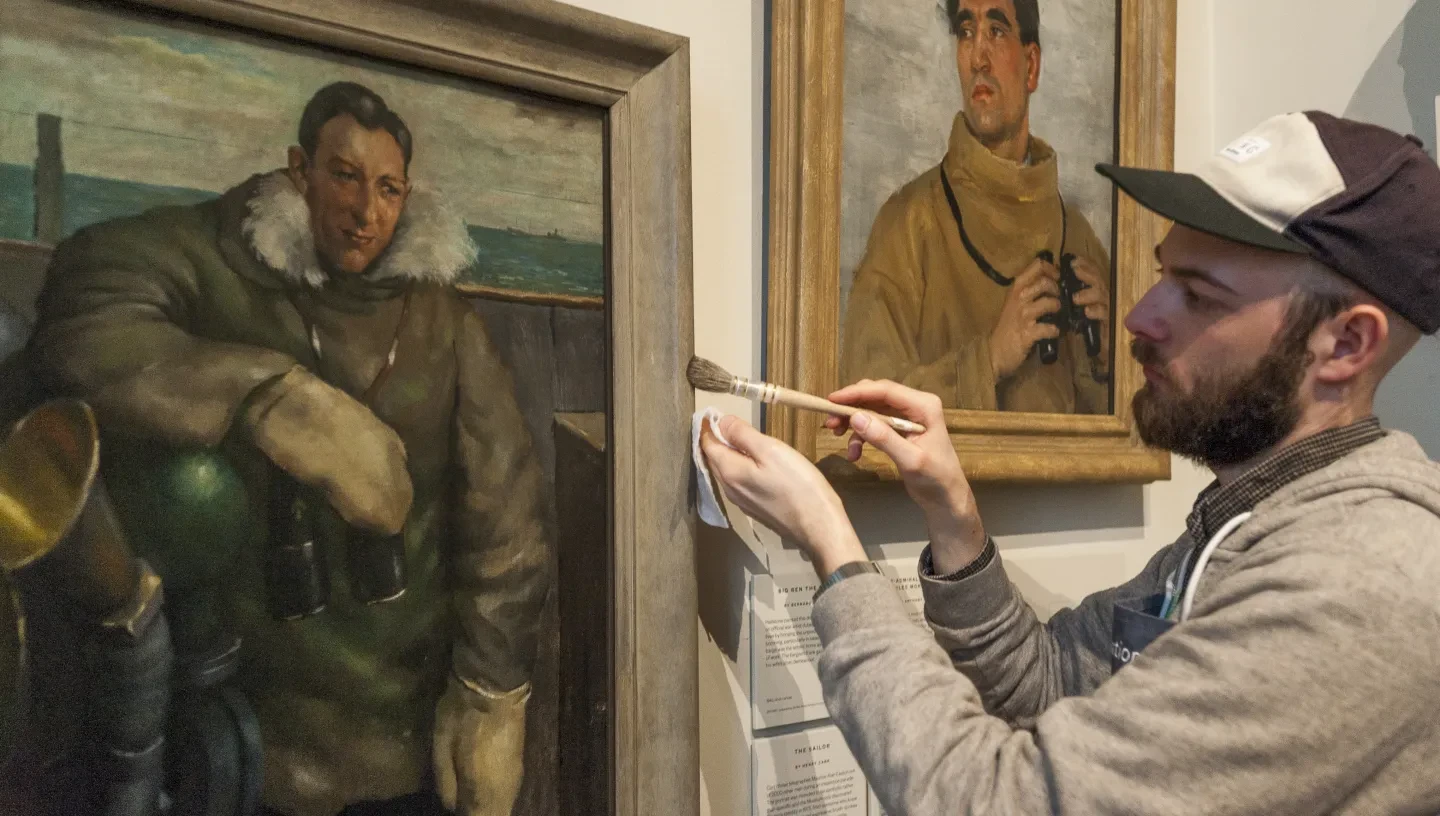
Support stories like this
Discover the artists, ideas and creativity connected with Greenwich’s galleries and museums.
